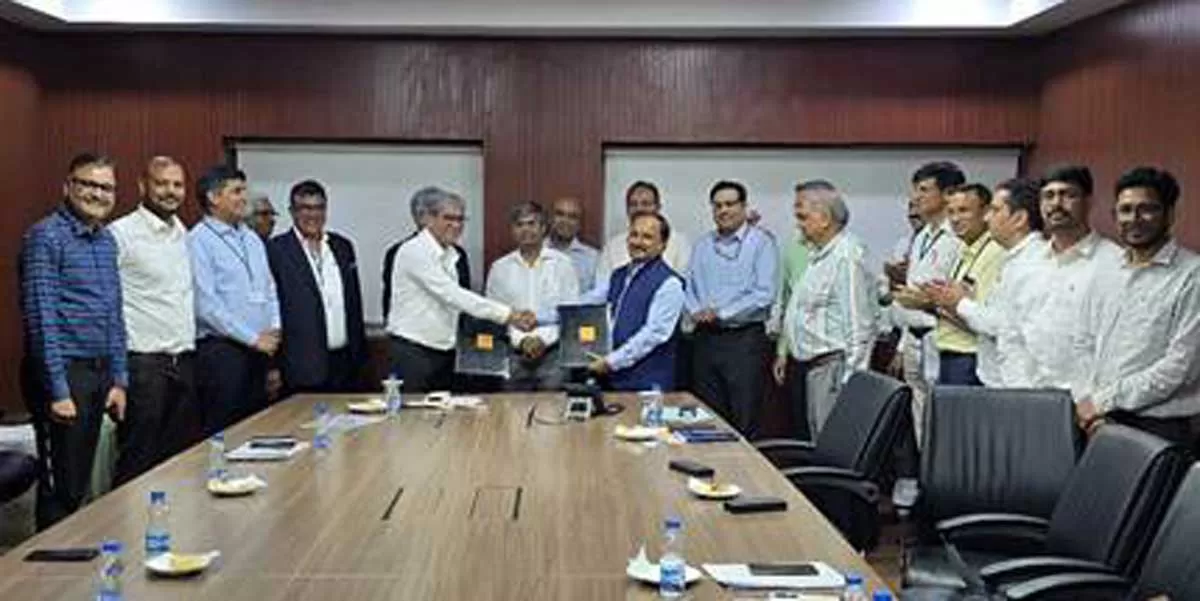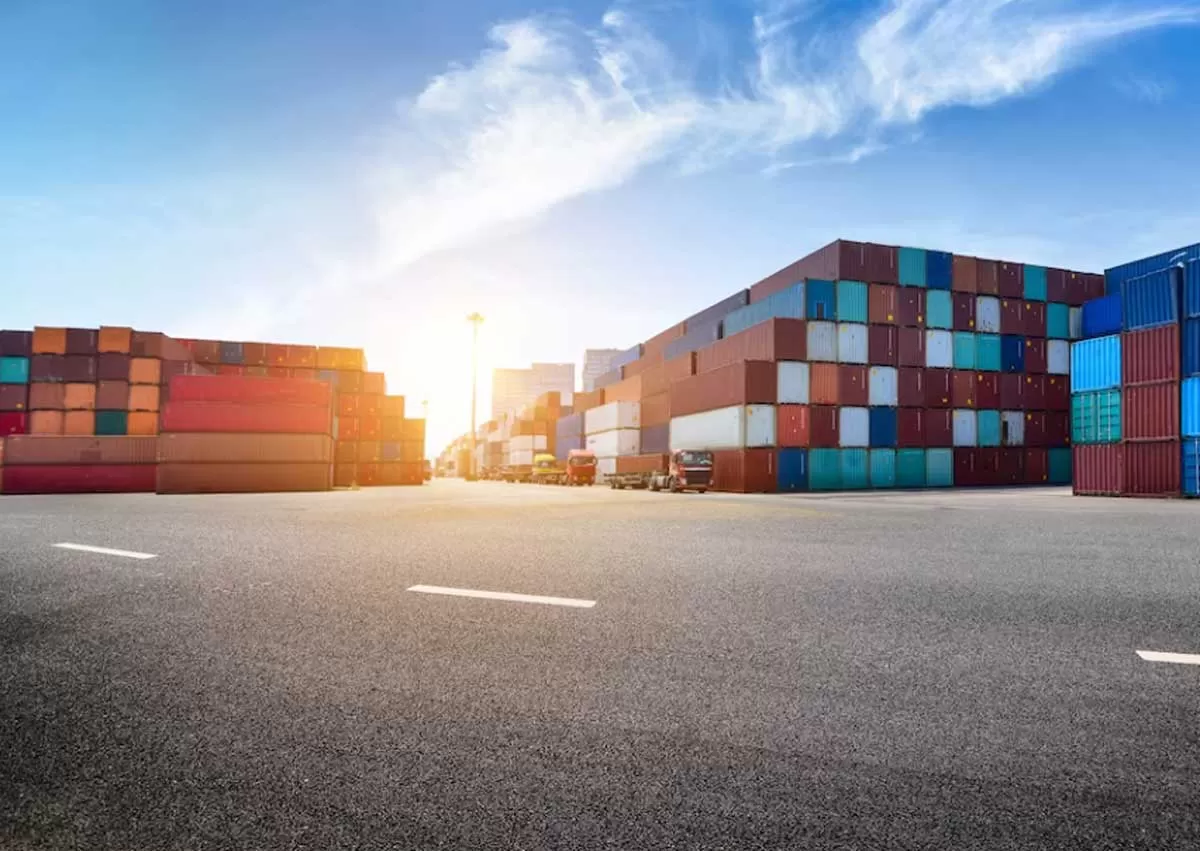ARUN KARAMBELKAR writes on how HCC created a world record in long distance concrete pumping.
HCC created a world record by successfully pumping concrete up to 2,432 m at Sainj Hydroelectric Power Project in Himachal Pradesh, surpassing the previous record of 2,015 m in France.
The company is executing Sainj Hydroelectric Project, which is a run of the river development on river Sainj in Himachal Pradesh. The project comprises a diversion barrage, intake arrangement for drawing 35.88 cumecs of water, two underground de-silting chambers, a 6,300-m-long 3.76 m diameter modified horse shoe shaped Head Race Tunnel (HRT), an underground restricted orifice type 9 m diameter and 87 m high surge shaft, a 2.75 m diameter 550 m long steel lined pressure shaft, two Pelton vertical axis turbines, each generating 50 MW power located in an underground power house.
Choosing long distance pumping
The finished diameter of HRT at Sainj HEP is 3.85 m with an average lining thickness of 0.25 m. In such smaller diameter tunnel, the vehicle movement and crossing are restricted and carrying out multifarious activities poses a severe challenge due to congested working space. The movement of concrete conveying transit mix is often restricted to one way traffic only. The temperature and humidity and installation of an adequate ventilation system also create challenging working conditions as the tunnel length increases.
It was to overcome these problems that HCC decided to use long distance concrete pumping for the concrete lining work of HRT. Although long distance concrete pumping has several advantages such as reduced cost, improved speed of construction and enhanced quality of construction, it has serious challenges as a technique. Considering the difficult task at hand, HCC envisaged to pump up to 1.36 km on upstream side and 2.432 km on the downstream side.
Challenges encountered
Pumping of concrete is primarily done for higher productivity, better quality and safer operations. Modern construction is demanding escalating heights (up to 600 m) and longer distances (up to 1.9 km) of concrete placement through pumping. With taller heights and longer distances come the challenges of materials, selection of right pump and pipe configurations, scheme of pipeline, and coordination among the team.
While implementing one such case of long distance concrete pumping at Sainj HEP, the engineers encountered the following challenges:
Selection of Concrete Pump: Initially, the pumping was envisaged for horizontal distances up to 2.432 km. After scrutinising various options, Schwing Stetter´s make SP 4800 pump was selected. The operating pressure of this pump is to the tune of 400 bar, which was best suited for the intended distances and pipeline configuration selected by HCC. Depending on the pumping distances and hence the pressures, this pump could be operated on two sides, viz, the piston side (for long distances) and the rod side (for short distances). HCC developed a protocol for correlating the pump back-pressure with concrete properties. The engineers ensured the continuity of long distance pumping through continuous inspections and maintenance during pumping and in idle conditions to avoid any kind of breakdown and consequent time delays.
Pipeline installation: Selecting the right pipe diameter is a critical aspect. The pipe thickness selection is governed by the pump pressure. The challenge then is also to blend this fact with the most cost-effective solution. Considering the required flow rates, the productivity and pressure considerations, HCC chose a 150 mm internal diameter pipeline. To sustain high pumping pressure, a variable thickness pipeline was selected (10 mm thick near the pump and then 7 mm thick). An important part of the pipeline is the clamp and the associated safety, since the working pressure is much higher than the conventional and possibly dangerous, if not handled properly.
Following were the considerations taken into account for pipeline layout:
- Efficient for installation and maintenance.
- Cost-effective.
- Least pressure drops due to bends.
- Less wear of pipeline.
The installation of pipeline was done on concrete blocks with an objective of providing stability; adequate clamping arrangements were required for jerk-free operations, especially for the close-to pump pipeline. Complete installation of pipeline for 2.4 km is a laborious and time consuming activity and HCC had to plan and execute the same with great discipline and precision.
During installation and operations, complete and thorough cleaning of the pipeline is essential as even a small chunk of concrete remaining inside the pipeline has the potential to disrupt the pumping operation. HCC had organised rigorous training of the cleaning team for safe and efficient operations.
Keeping cleaning accessories and toolboxes at several locations and distributing the worker teams and supervisors to address issues in several segments helped accelerate the operations. Adequate lighting, ventilation and constant dewatering and cleaning were ensured.
Concrete materials: The material includes aggregates, cement, fly-ash, admixtures and water. For a typical hydro project, controlling the variations in the crushed aggregates is the key for controlling the quality and consistency of concrete. Cement and admixtures being manufactured under stringent quality control need only periodic third party testing. Variations in fly-ash need to be properly monitored to maintain consistency in the supplied concrete. After understanding the potential variations, HCC optimised the aggregate crushing plant for optimal performance while meeting the specific aggregate requirements and ensured the following of a strict QA and QC regime. Subsequently, the key challenge was to establish a set of constructible, robust and responsive concrete mixes meeting the envisaged challenging pumping distances.
While developing concrete mixes for various distances, the following factors have been taken into account:
- Holistic understanding of the materials.
- Pump configuration for various distances of concrete piping.
- Diverse climatic conditions.
- Required placement rates vis-a-vis available concrete batching and mixing plant.
- A critical assessment of skill level of available manpower.
Developing proper interfaces between human and non-human elements of the project formed an essential feature of this operation. After critically studying the materials - equipment - processes - human resources, HCC objectively translated the same into specific concrete parameters, concreting parameters and associated control points. Hence, mixes were developed to cater to such wide range concreting requirements.
Setting time regulation - the key to stripping
With the help of a specially formulated chemical admixture (BASF SKY8787), the self compacting concrete (SCC) could provide varying retention periods (4-12 h), however with similar setting times ranging between 18 to 24 hours. This was required for maintaining the required time-cycle and hence productivity. The setting times were measured in the lab and field, which in-turn was correlated for better control.
Dealing with adverse climatic conditions: The project location in the Himalayan region has varied climatic conditions with temperatures ranging from 5¦C to 35¦C. This required HCC to continuously develop and monitor robust, flexible yet responsive concrete mixes. Hence, periodical lab and full scale field trials were performed. The company´s difficulties increased when the difference between the outside and inside temperature were substantially more, as this made concreting appear as a serious challenge.
For instance, when the external temperature was around 5¦C (RH = 25 per cent) and at the pouring point the temperature was 40¦C (RH > 95 per cent). In such difficulties, rigorous lab and field tests guided the execution.
Ensuring safety: Although pumps are operated by skilled operators, the entire 2.4 km long pipeline posed a serious safety concern due to high sustained pressure. To ensure safe working conditions inside the tunnel, the pipeline anchoring, clamping, alignment, joints and bends were double checked before commencing the operations as well as during the operations. Adequate ventilation and lighting were provided inside the tunnel as along with first aid and medical facilities at regular intervals.
Team work - the essence
For the successful execution of such a challenging task, HCC built a team that exhibited the characteristics of seamless cooperation, trust and team work. This is essential for delivery of concrete at such distances to become a reality. Also, the team was encouraged to participate in open discussions and openly provide solutions to every problem encountered during such implementation.
About the Author:
Arun Karambelkar is the President and CEO of HCC E&C.
To share recent developments in construction techniques, write in at feedback@ConstructionWorld.in
Summary of the Concreting Requirements
| Parameter | Minimum | Maximum |
| Workability |
|
|
| Type of concrete |
SCC |
SCC |
| Pumping distance (m) |
450 |
2,400 |
| Ambient temperature outside the tunnel (°C) |
5 |
35 |
| Ambient temperature inside the tunnel (°C) |
30 |
42 |
| Relative humidityinside the tunnel (%) |
95 |
100 |


















